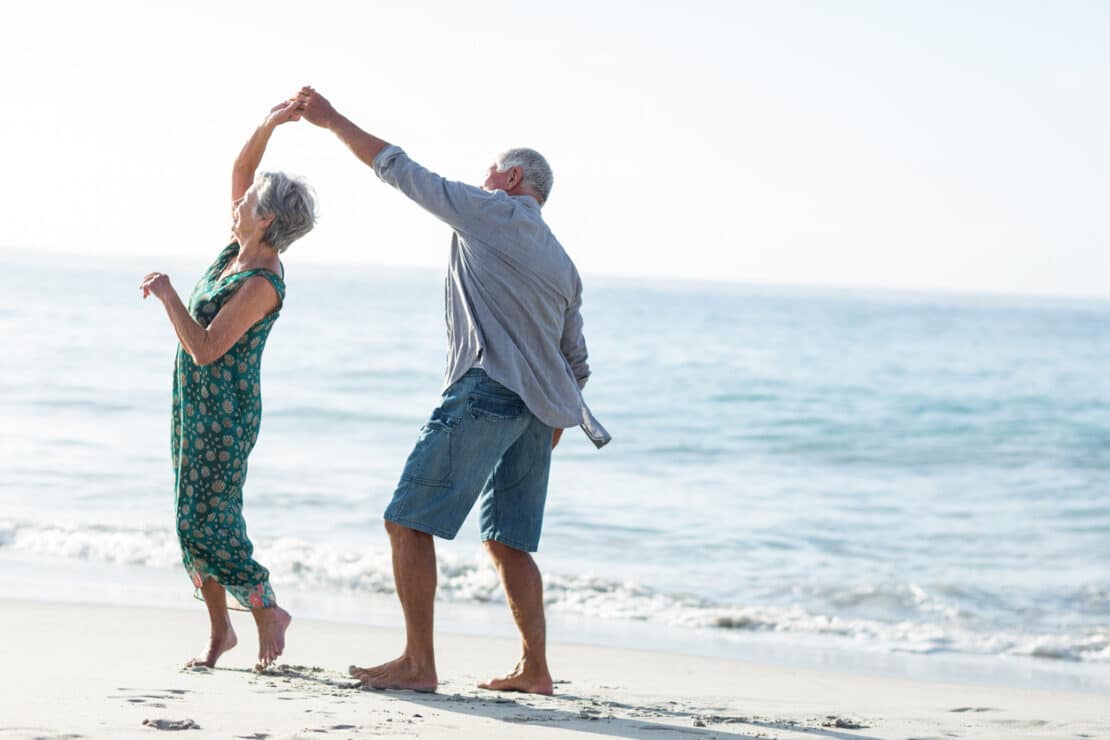Seniors tend to have different fitness goals than young people.
Instead of packing on muscle to look buff, older folks are more likely to want a workout that helps them live independently and continue to do the things they love.
Researchers have found that one form of exercise may be better than all others in reaching this objective.[1]
Dr. Kathrin Rehfeld of the Center for Neurodegenerative Diseases in Germany and her colleagues recruited 52 healthy seniors to test the workout. They randomly assigned half the volunteers to do exercise that included walking, riding a stationary bike, strength training, and stretching. The other subjects took dance classes.[2]
For the first six months, the dance group met twice a week. For a year after that, they met weekly. Instructors frequently challenged them with new steps.
“We tried to provide our seniors in the dance group with constantly changing dance routines of different genres,” Dr. Rehfeld said. The subjects learned jazz, square, Latin-American, and line dances.
“Steps, arm-patterns, formations, speed, and rhythms were changed every second week to keep them in a constant learning process,” she said.
Dancing Increases Memory and Balance
Brain scans showed that subjects in both groups increased the volume of their hippocampus. This is the brain region that plays an important role in memory, learning, and maintaining balance.
Unlike other regions of the brain, the hippocampus can increase in size throughout life. But the hippocampus also can shrink. This is one of the markers associated with Alzheimer’s disease and other types of dementia.[3]
But compared to the conventional exercisers, those in the dance group had beneficial changes to more sub-regions of the hippocampus. In other words, all of their hippocampus grew stronger, not just one part.
The dancers improved their balance. Conventional exercisers saw no changes in their balancing ability. Balance reduces falls in seniors, making it crucial for safe, independent living.
The researchers theorize that the “multimodal” nature of dance—it has both physical and mental components—accounted for the extra brain and balance boost.
“Dancing seems a promising intervention for both improving balance and brain structure in the elderly,” the study concluded. “It combines aerobic fitness, sensorimotor skills, and cognitive demands while at the same time the risk of injuries is low.”
The study was published in the journal Frontiers in Human Neuroscience.
Dr. Rehfeld added: “Dancing is a powerful tool to set new challenges for body and mind, especially in older age.”
You Should Be Dancing
Dancing promotes cardio fitness while improving balance and coordination. And dancing has a crucial cognitive component that other workouts, such as jogging or bicycling, can’t match.
Dancers constantly learn new steps. They have to coordinate their movements with music. Such mental challenges help seniors’ brains stay sharp. They may even prevent Alzheimer’s, according to the new research.
Two other studies confirm the powerful health benefits of dancing.
British researchers analyzed data from 11 surveys that included 49,000 people. Their study was published in the American Journal of Preventive Medicine.[4]
The investigators compared the health benefits of walking versus dancing. Both were beneficial. But dancing was better. It lowered heart disease risk more.
The second study was published in the journal Frontiers in Aging Neuroscience. It took a slightly different approach.
Researchers from several U.S. universities had subjects learn country line dancing. They found the subjects benefited in two ways: They gained physical fitness, and learning the dance steps stimulated their brains. It slowed brain aging.[5]
To get the full mind-body benefits of dancing, be sure to vary your routines. Don’t do the same steps over and over.
By continually learning new dances, you’ll improve in three important areas: cardio, balance, and memory.
Editor’s Note: Discover natural, non-drug methods to transform your health. Read our monthly journal, Independent Healing. It’s your best source for unbiased, evidence-based medical information. For more information, click HERE.
Related Articles
Top 5 Exercises for Stronger Bones
9 Exercise Myths…and What Science Says About Staying in Shape
Simple Way to Make Workouts Easier
References:
[1] https://blog.frontiersin.org/2017/08/29/dancing-can-reverse-the-signs-of-aging-in-the-brain/
[2] https://consumer.healthday.com/cognitive-health-information-26/brain-health-news-80/dance-your-way-to-a-healthier-aging-brain-726264.html
[3] https://www.frontiersin.org/articles/10.3389/fnhum.2017.00305/full
[4] https://www.ajpmonline.org/article/S0749-3797(16)00030-1/fulltext
[5] https://consumer.healthday.com/fitness-information-14/dancing-health-news-246/dance-your-way-to-better-health-747602.html

